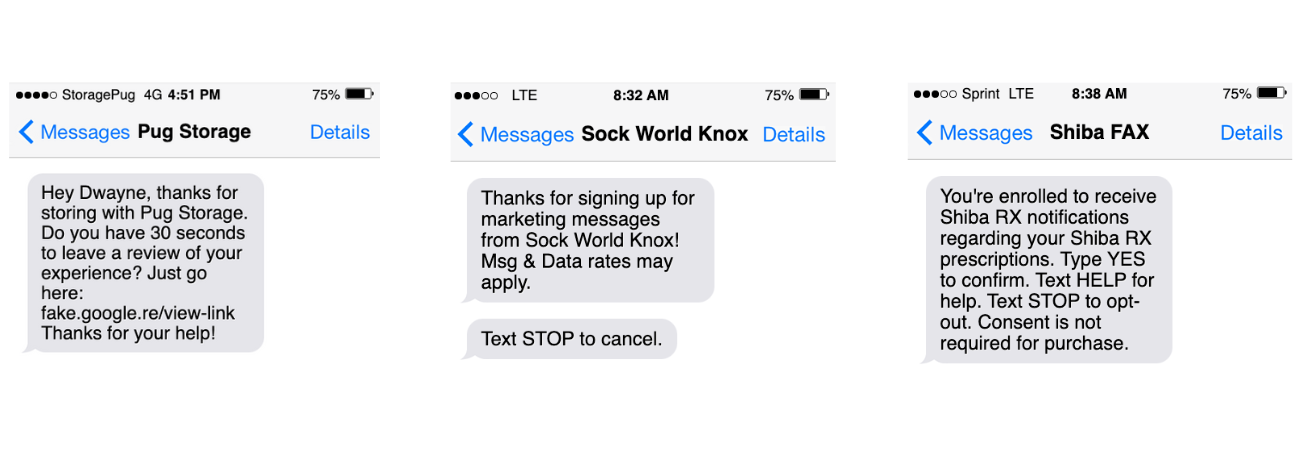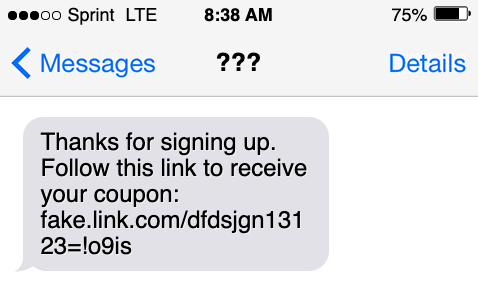Menu
January 11, 2023


You’ve probably heard it said by now: it’s important to be texting your self storage customers.
Between high open rates, being viewable even unopened, and just generally being a more reliable way to reach customers, SMS—or texting—is key to communicating with your customers.
While that’s true, businesses also have a responsibility to stay compliant with rules, laws, and regulations regarding texting.
But what does that mean?
Just like the FCC regulates how businesses reach out to customers and potential customers via phone calls, there are regulations regarding contacting customers by text message.
This is what we mean when we talk about SMS compliance: remaining compliant with regulations and generally using best practices and integrity regarding how you contact customers.
In addition to federal and industry regulations, there are also regulations set forth by carriers themselves.
With all of this to consider, keeping up with regulations and staying compliant may sound like a bit of a chore. Should you even bother with text messaging, after all?
Yes. The answer is definitely yes, make sure you’re texting your clients!
With some simple best practices and a bit of integrity, staying compliant is a simple task. And when in doubt, make sure to consult a legal expert.
Federal & Industry Regulators
Carriers
Yes. Provided you follow the regulations of all the above regulatory bodies, texting is something your business can and should do!
In fact, it’s one of the best ways for you to communicate with your customers.
Here are some quick facts about texting your customers and how it benefits your self storage business:

There are so many reasons you should be texting! So long as you’re keeping SMS compliance in consideration, texting is the solution to many of a self storage facility’s communication problems.
Thankfully, there are many tools available today that help you stay compliant when messaging customers.
In fact, in many cases, you’ll be using some kind of SMS service to do the actual messaging rather than sending texts from your own phone. These services often have such compliance baked into their operations.
It’s understandable if you want to be more familiar with the laws and regulations yourself, though! The best place to get this kind of information is from a legal expert familiar with the question.
In the meantime, here is some information to get you started.

Have you ever given the cashier your phone number and been asked to press a button on the card reader to accept terms? This is a major part of SMS regulation, and it comes from the Telephone Consumer Protection Act passed in 1991.
While this law was passed before SMS was even invented, later court cases established that it does, in fact, cover texting.

When it comes to texting, perhaps the most important part of the law is the requirement to have consent from your customer before you are allowed to send them a message. This helps protect consumers from unwanted text messages coming from any company that happens to get their hands on a list of phone numbers.
The best way to do this is with both an initial opt-in measure and a confirmation message that offers opt-out instructions.
That last part is the text you received from the store after hitting the button on the card reader. It typically includes something along the lines of “Message STOP to opt-out of communications.”
Another key part of SMS compliance is making sure you identify yourself in your message.
Maintaining the security and trustworthiness of text messaging is crucial for both consumers and businesses. The reason is obvious for consumers, but businesses also benefit from this security as it means that consumers are more likely to keep opening texts from businesses.
Clearly identifying yourself in your messages is an important part of building and maintaining that trust both in your business and in SMS services in general.
So if you’re messaging your self storage tenant? Make sure you lead with a friendly introduction!
Here are some examples of good messaging practices.
These aren’t templates and are not guaranteed to ensure compliance with SMS regulations, but they should help better understand some of what we’ve been talking about!

You may be so familiar with texts from businesses that those “good” texts were a little obvious.
What does a bad text look like, though? Here’s a prime example:

We don’t know whether or not written (or electronic) consent was gathered by the business prior to this message being sent.
Let’s assume it was. What is wrong with this message if consent was gathered?
Can you guess?
Right. There’s no way to identify the business. This message is extremely suspicious. It could be a completely legitimate text and safe link to visit. It could also be a scam, or it could be a business trying to mislead customers by hiding who they are.
Either way, the lack of clear identification makes this text a no-go.
Texting—also known as SMS or Short Message Service—is a powerful marketing and communication tool.
With texting, you can reach your customers much more reliably than with email.
The power and reach of texting rely upon businesses adhering to SMS regulations and maintaining the trustworthiness of the service for consumers.
The information in this post won’t serve as a good alternative for actual legal advice or consultation from an expert. If you have any doubts or serious questions with legal implications, please make sure to reach out to an expert for legitimate legal counsel!
How are some more of our favorite posts for running your self storage business!
At StoragePug, we build self storage websites that make it easy for new customers to find you and easy for them to rent from you.
